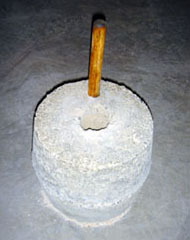| You can see the central spindle in the casting board, and the pieplate with small hole cut with the X-acto knife to fit over it.
|
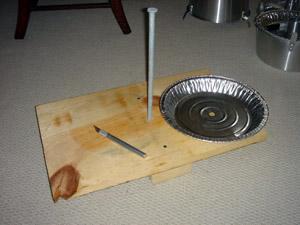
|
| Here is the pieplate with the spindle inserted for the bedstone
|
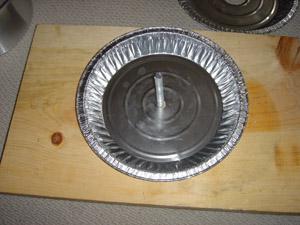
|
| One pipelate is taped over the wide mouth of the cake pan — you can see the pieplate for the runner stone in the background and the spindle affixed to a board to keep it verticle during casting.
|
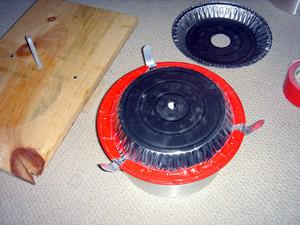
|
| The assembled mould for the bedstone. Note that the bedstone is cast upside-down, so what you see here is the pieplate that forms the top (grinding) surface and centre spindle upon which the top stone turns.
|

|
| This is how the runnerstone pieplate is inserted over the central tube of the cake pan — the while thing is inverted and the cement is then poured into the cake pan.
|
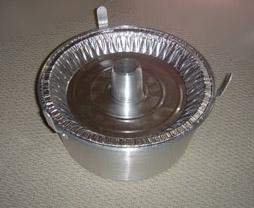
|
| The central tube for the cake pan with the hole cut in its bottom for the crank handle.
|
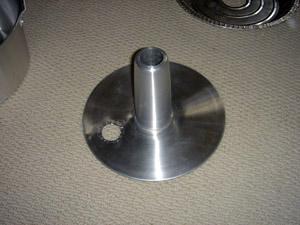
|
| Here is the cranking handle inserted into the runnerstone as it is being cast.
|
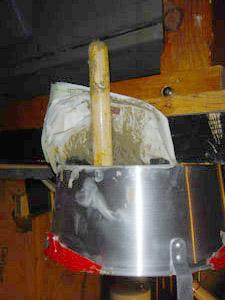
|
| Getting ready for the pour in the garage. The wheelbarrow is for mixing up the cement. One bag of Quicrete will easily do for a set of stones.
|

|
| You can mix cement in a 5 gallon bucket, although you will have to mix two batches, and it can be easy to add too much water because it is harder to mix in the bucket than in the wheelbarrow.
|
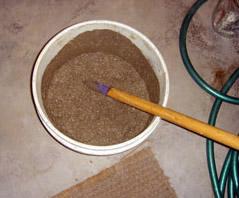
|
| Pour the cement into the mold level with the top.
|
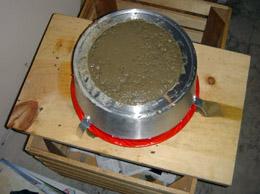
|
| For the runner stone, cement is poured into the mold, the pieplate is added, and then... (see next picture)
|
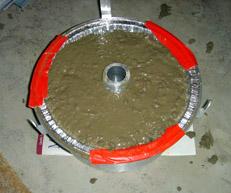
|
| The two stones cast. Let the cement set at least overnight (2-3 days is better) before unmoulding.
|

|
| In order to get the right curvature on the grinding faces, the pieplates need to be slightly bowed. Here we see the extra cement (you could use gravel) in the top pieplate to make it bow down a little. This then gives the runner stone a concave bottom (remember it is cast upside down).
|
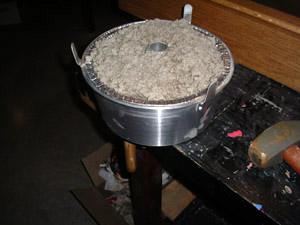
|
| On the left is the first try assembled. ON the right is the second attempt (bedstone) still in the cake mould but with the pieplate removed.
|
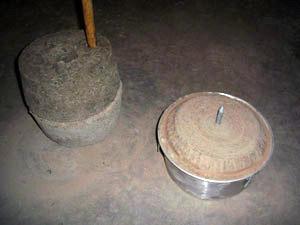
|
| In order to make the stones grind efficiently (it will work without, but with much more difficulty), you need to cut in simple grooves. A mason's hammer and cold chisel are sufficient for this, but BE SURE YOU WEAR SAFETY GOGGLES as chips of cement will fly around!
|

|
| Here you can see the simple grooves in the bedstone. Similar ones should be cut into the runner stone. Historic millstones used many different patterns.
|
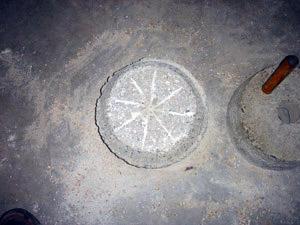
|
| The finished, assemebled quern.
|
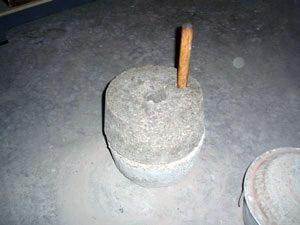
|
| Some hard wheat on the bedstone.
|

|
| Wheat in the feed hole in the runnerstone — turn the handle and flour will come out the gap between the stones!
|

|

